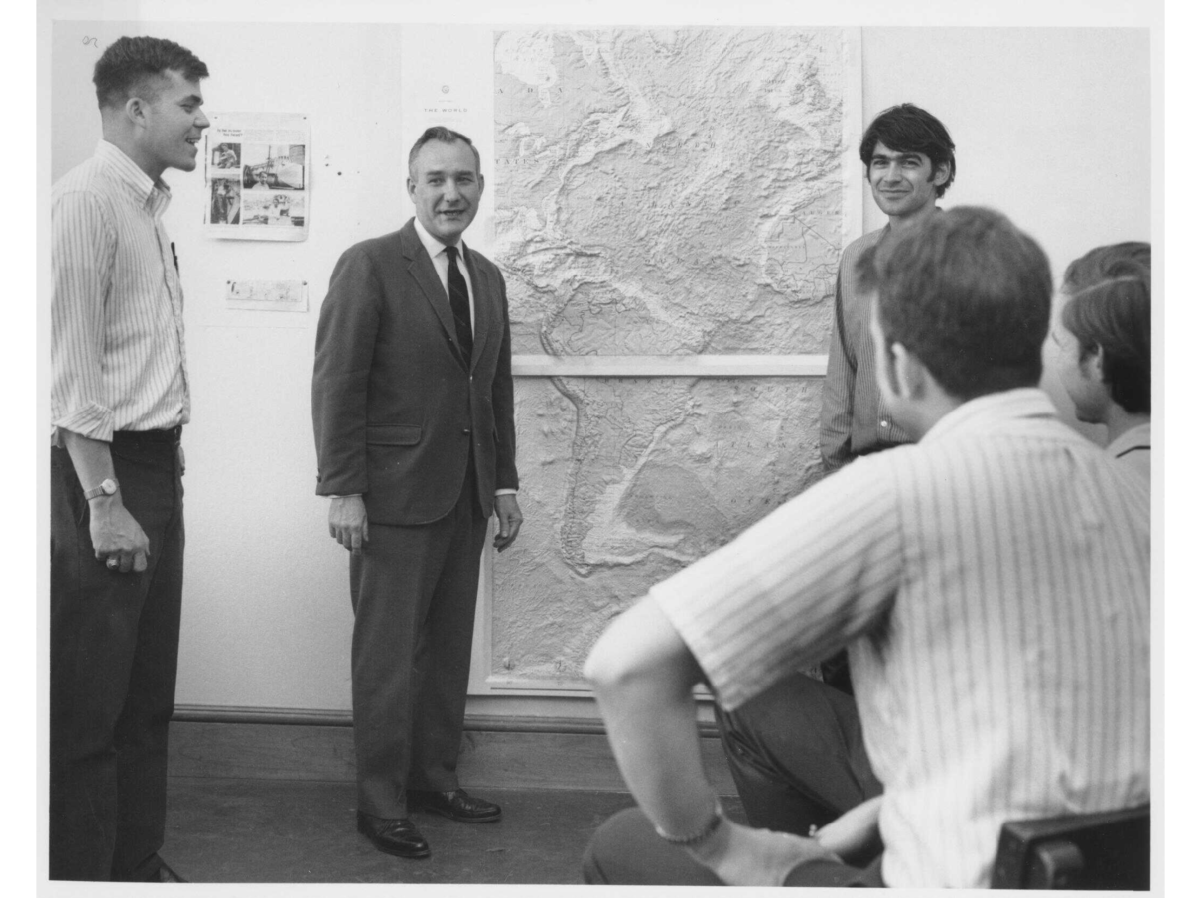A detailed and very informative article in the November 28 issue of E&E News — “The essential news for energy & environment professionals” — offers a stirring tribute to William E. Heronemus, the much heralded civil engineering and (later) mechanical engineering professor at UMass Amherst who is considered the “father of modern wind power.” As MIE Professor James Manwell says, “Here is an article that recognizes where modern wind energy started — UMass engineering!”
See WIND: Meet ‘the Captain,’ the father of modern turbines »
Also see The UMass Wind Turbine WF-1, A Retrospective »
As MIE Department Head Sundar Krishnamurty observes, “What a wonderful tribute to Heronemus and our renewable energy program!” Meanwhile, in a message to Manwell, College of Engineering Dean Tim Anderson writes that the E&E News article is “most informative and with much credit given to UMass. You and your colleagues should be very proud of the role you and UMass had in developing wind energy into the viable renewable energy source it now is.”
The E&E News article, written by staff writer John Fialka, concentrates on the generative moments of the wind-energy movement as they were occurring at UMass. Below is an excerpt from the piece:

During the mid-1970s, a young engineering student, Charles “Sandy” Butterfield, met a professor who didn’t need a weather vane to know which way the wind was blowing in the U.S. energy business. His name was William E. Heronemus, and he was very sure of himself.
The future, Heronemus told his students at the University of Massachusetts Amherst, was going to be electricity generated by wind turbines. They would be large windmill-like structures that made power on land or on platforms floating in the ocean. Their future would be secure because there would be trouble with imported oil, Heronemus predicted before the Arab oil embargo of 1973. He also warned that nuclear power would become increasingly problematic decades before Japan’s disaster at Fukushima in 2011.
“This is an opportunity you will never see again,” the Captain responded. “I won’t take your answer now. You should go out and think about it.” Butterfield was thinking about it as he left Heronemus’ office; he found four of his fellow engineering students standing outside waiting for job interviews.
“Then I knew he had me,” recalled Butterfield.
Heronemus, who died in 2002, is now heralded by the university as the “father of modern wind power.” He had obtained a grant from the [National Science Foundation] to do experiments with wind power, and Butterfield and some other students designed and built some of the first modern wind turbines.
After a long, quirky, and often frustrating journey that lasted nearly a half-century, wind has become the fastest-growing energy source in the world. It now holds great promise for sharply cutting the globe’s greenhouse gas emissions by midcentury.
But the maturation of wind power did not emerge upon hopes for a victory over climate change or air pollution. It evolved because Heronemus, Butterfield, and the other pioneers in the business — many of them in Europe — struggled to find ways to make it cheaper and more competitive than coal and other fossil fuels.
Nothing about this was quick or easy. “We thought we were the smartest kids in the room,” Butterfield recalled. But the first major U.S. efforts, which were produced by NASA, Boeing Co., General Electric, and other masters of high technology, failed because the turbines were too expensive and often overpowered by the poorly understood physics that produce wind.
E&E News is an organization focusing on energy and the environment. As the website indicates, “Our five daily publications and video programs deliver original and compelling journalism that keeps top decision-makers in government, business, NGOs, and academia informed and ahead of the curve. E&E’s success as an independently owned news organization — established in 1998 — relies on producing timely and objective reporting that our subscribers from all sides of the issues value and trust. With more than 75 reporters and editors, E&E offers an in-depth look at energy and environment issues in Washington, D.C. and around the nation.” (December 2017)

